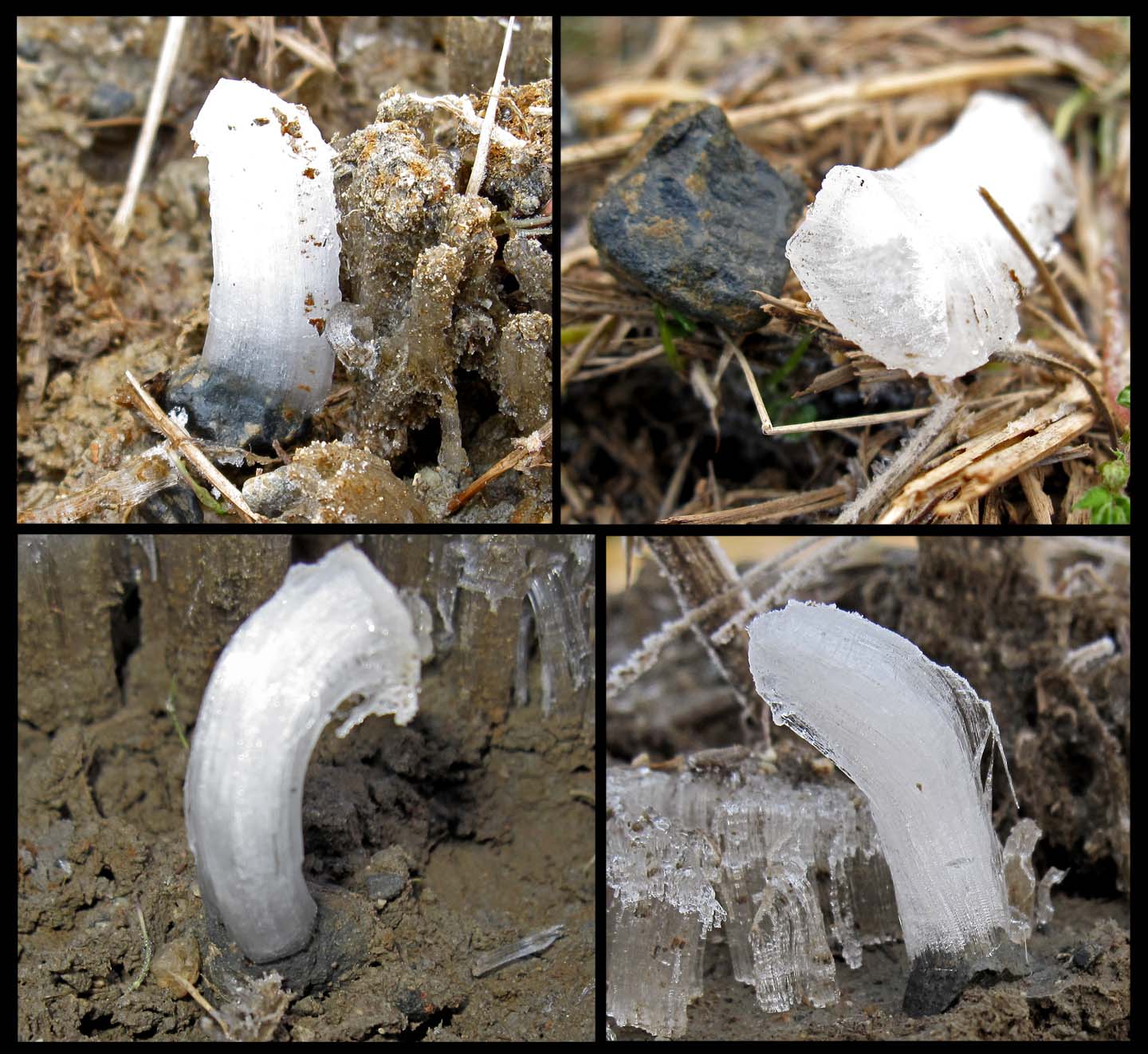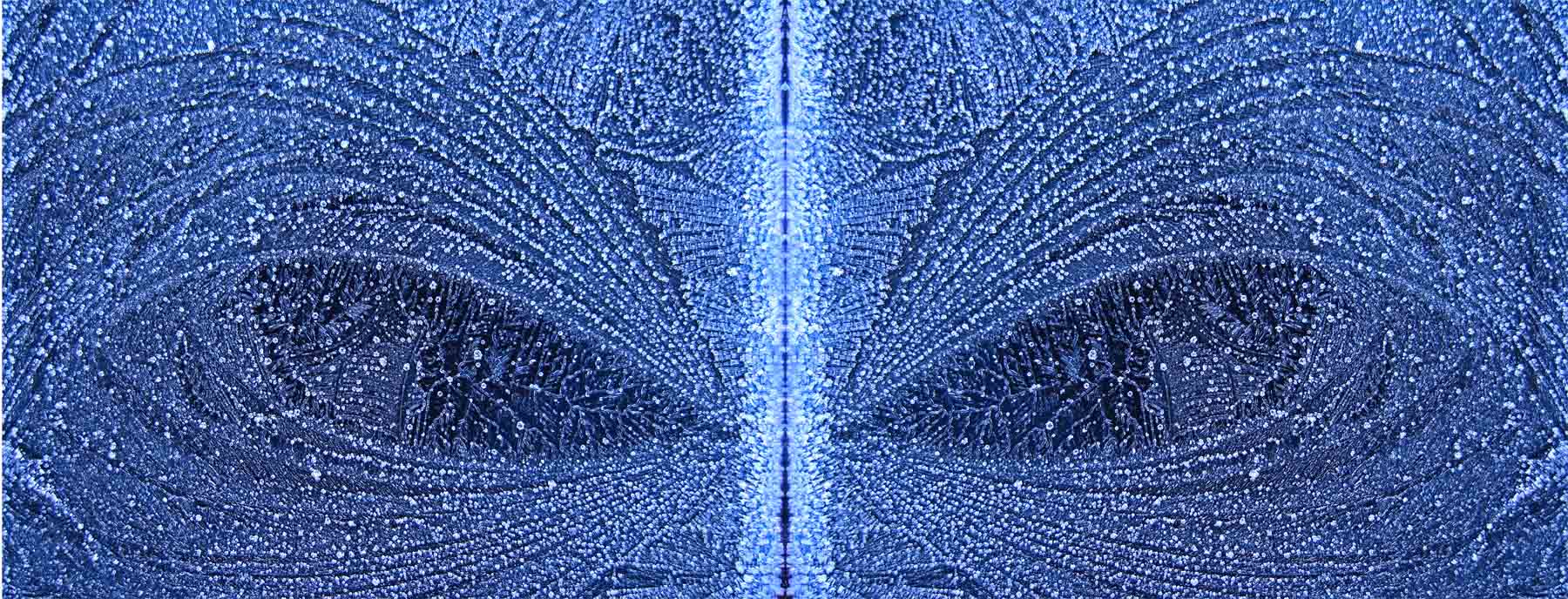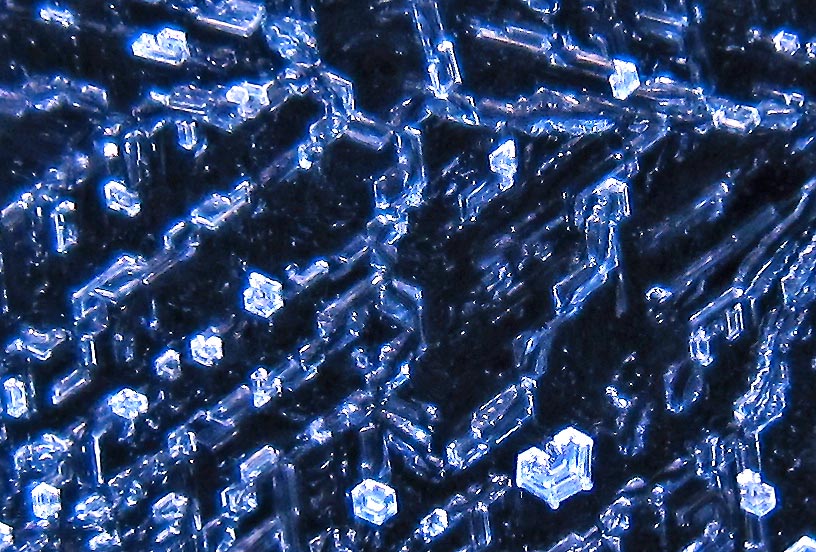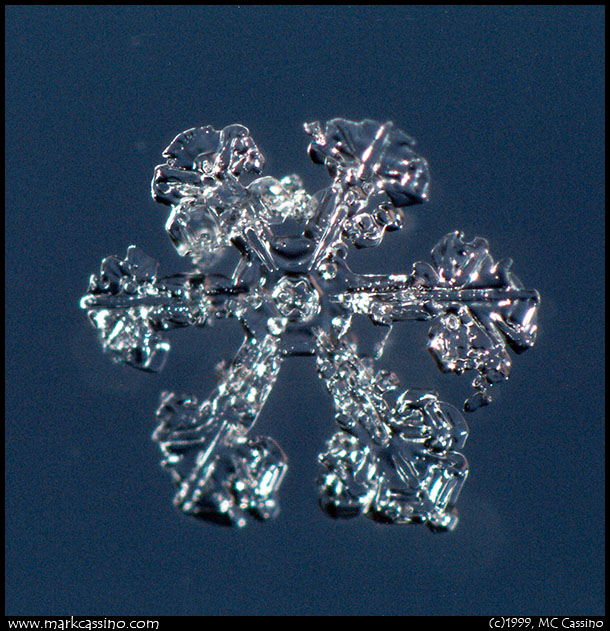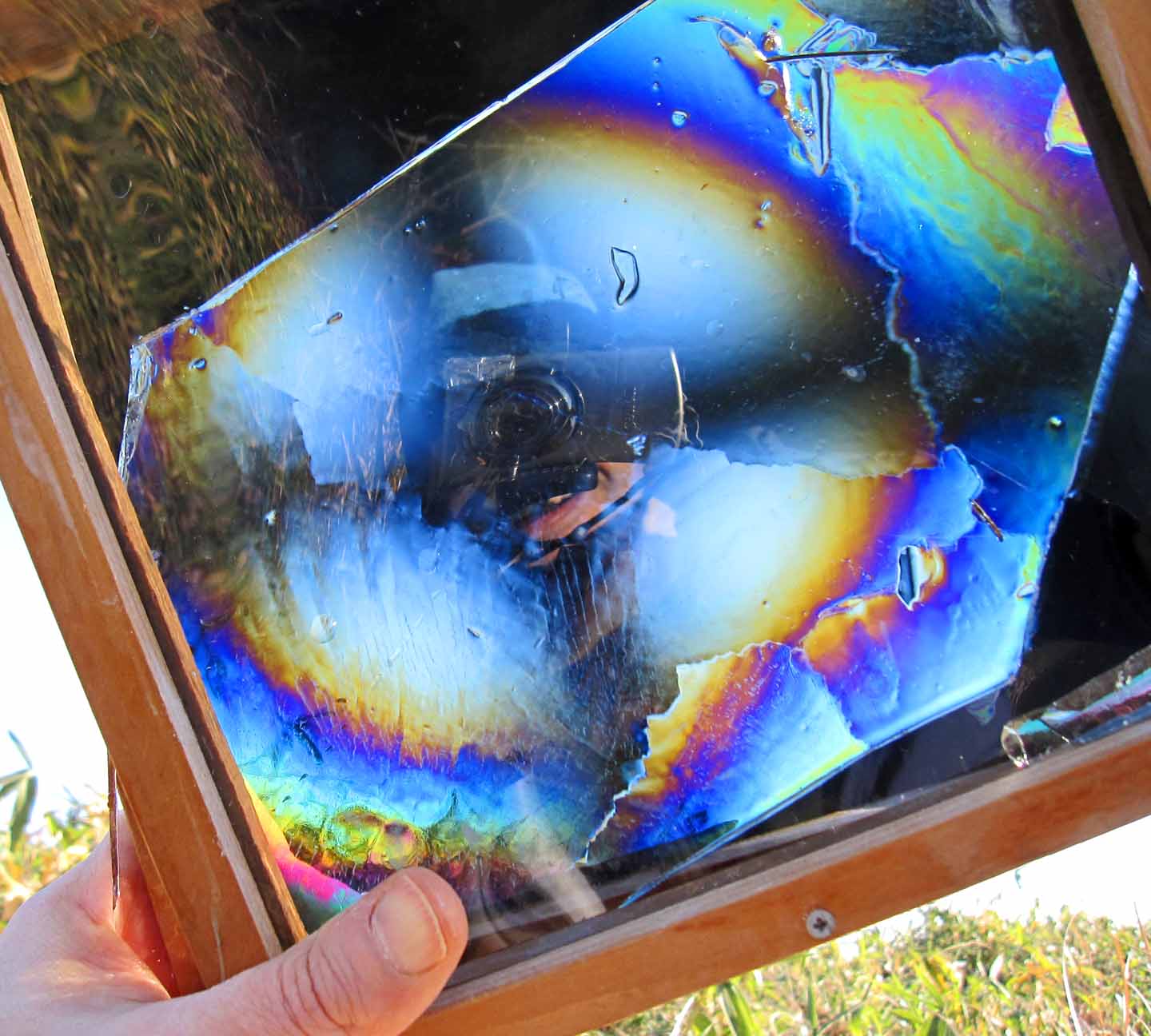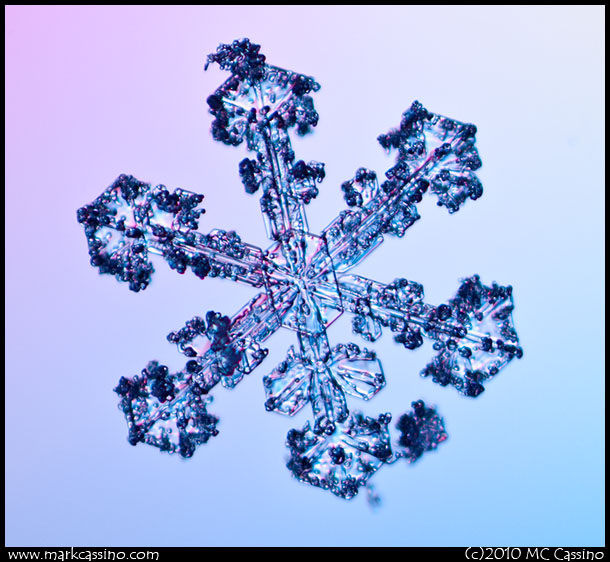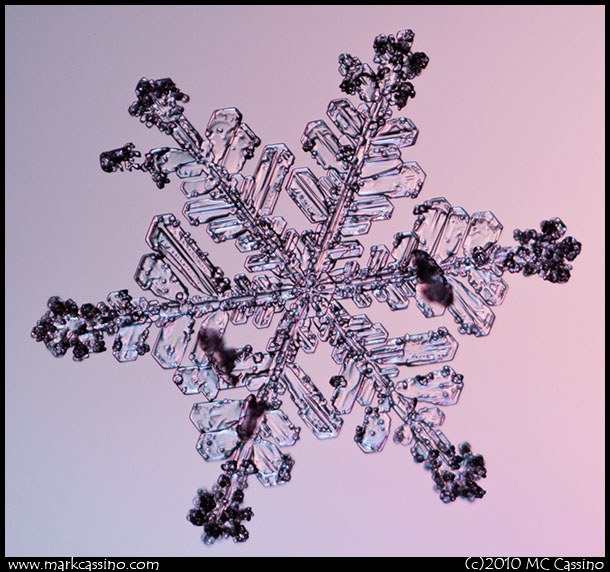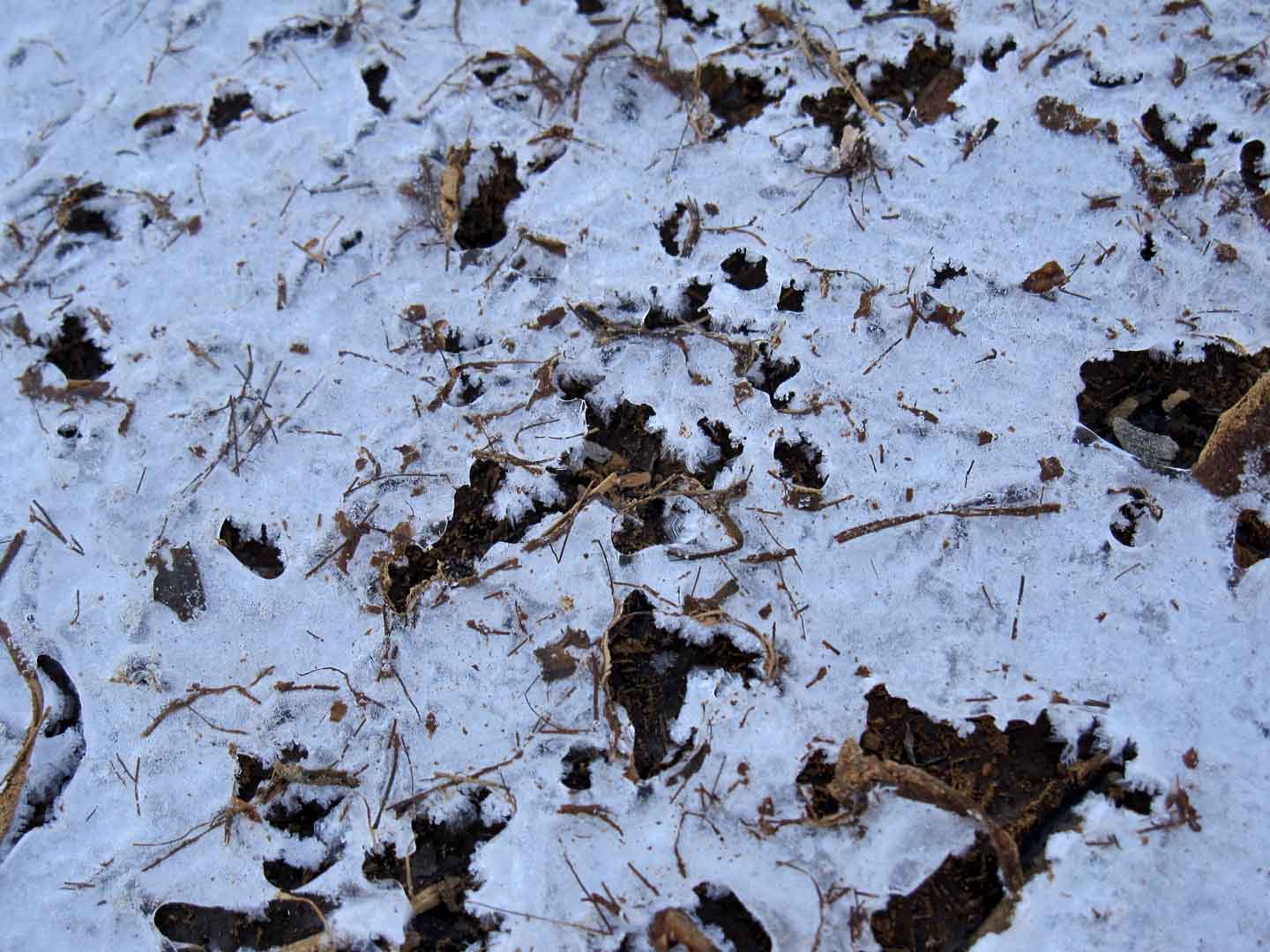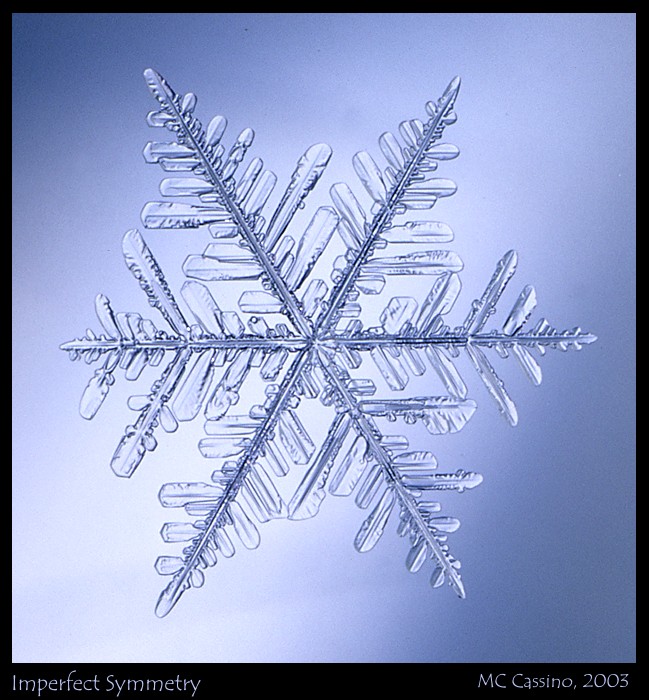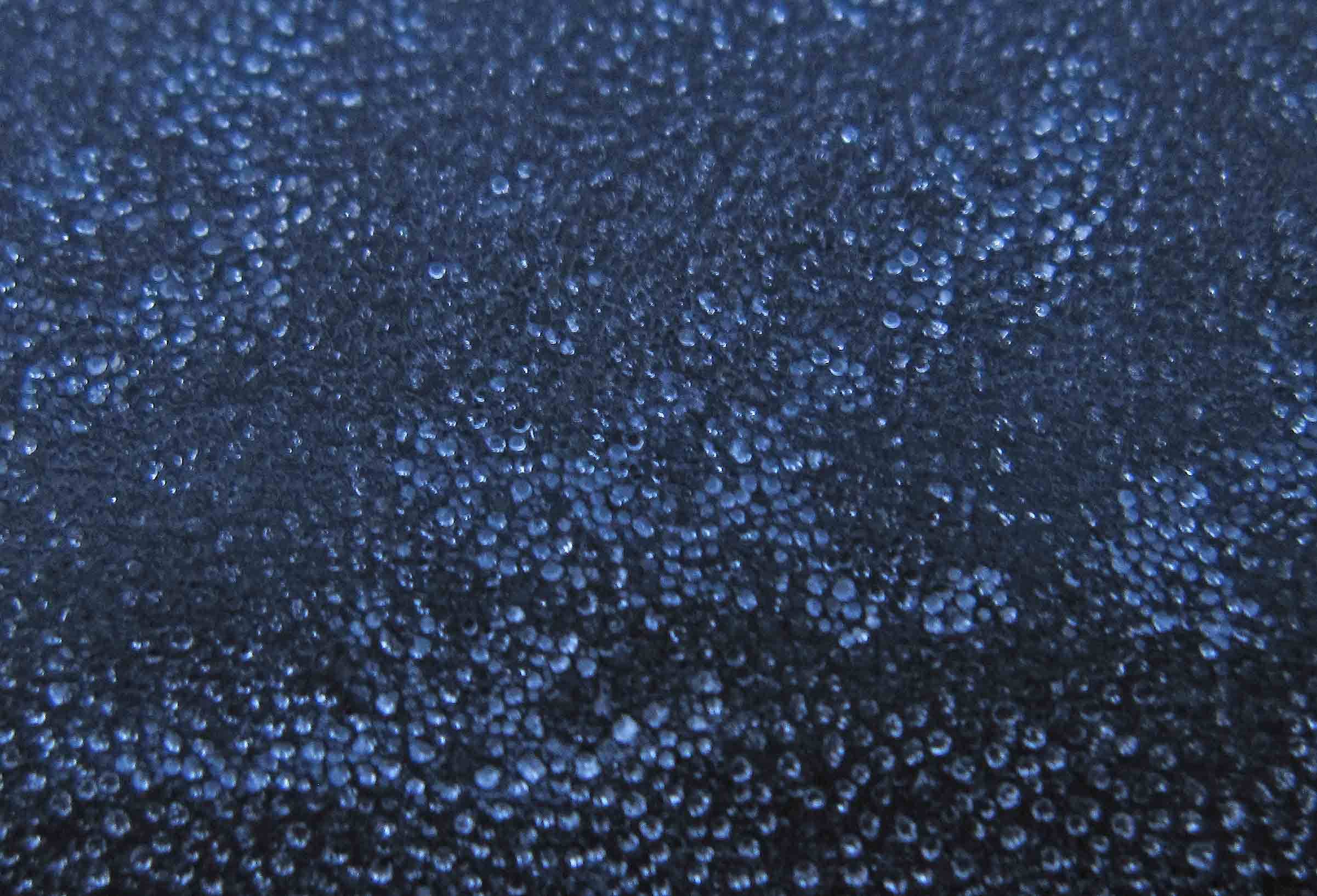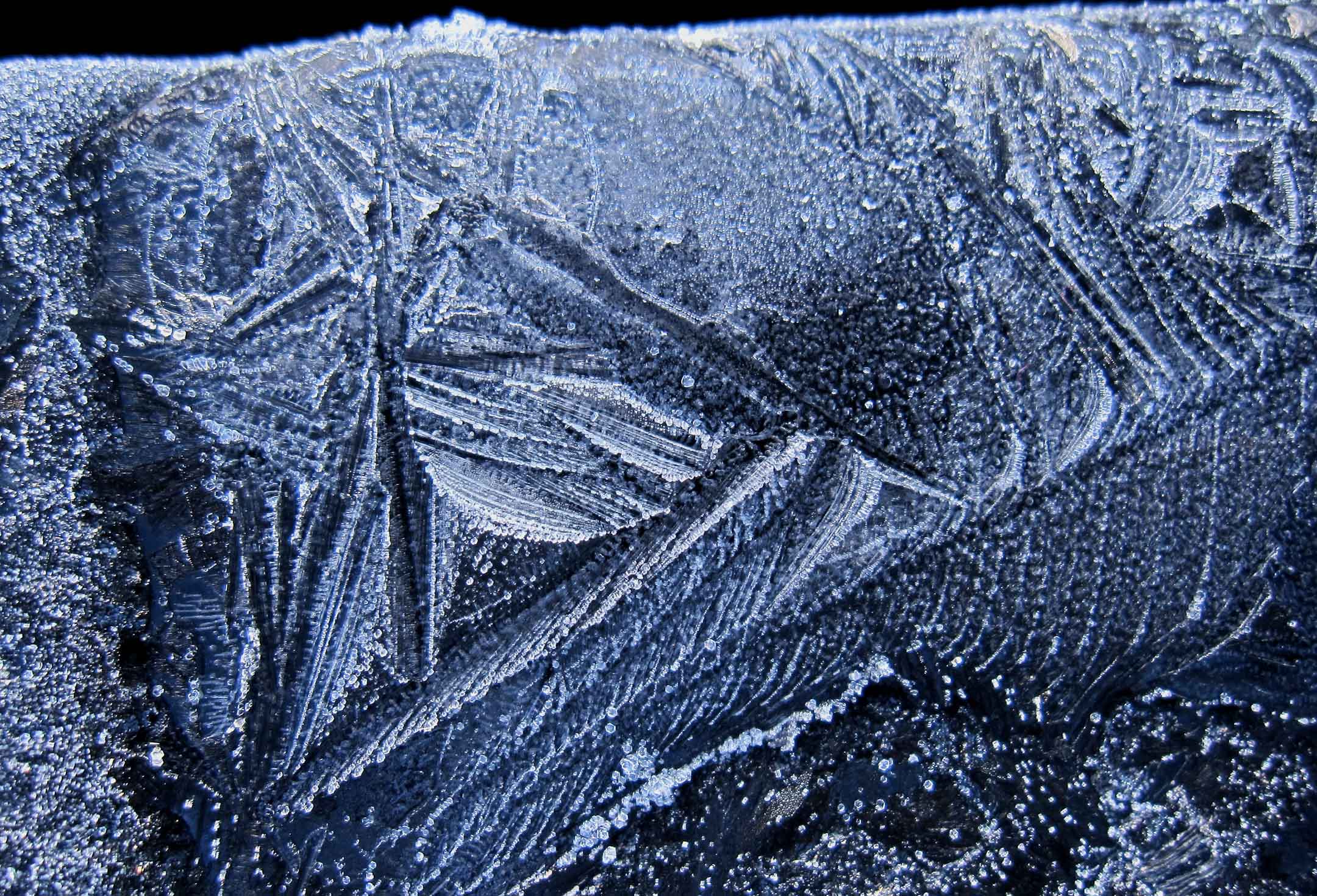Ice on the Rocks
January 27th, 2010On the morning of December 7 of 2008, I saw a small yet distinct white patch on the ground amongst the dirty brown crunchy soil-ice columns in a rice field. If I hadn’t been looking straight at it, I would have missed it. Crouching down and clearing away some of the surrounding dirt-ice columns, I found it to be a white ice column resting on a small pebble, unlike the surrounding brown columns that rested on the soil. You can see this pebble and ice at the upper left in the image below.
The white ice “cap” detached easily and cleanly from the pebble (See the above image, upper right). I could put the cap back on the pebble, and it would stay in place, fitting snugly.
Anticipating Snowfall...
January 25th, 2010Eyes and Dry Moats
January 22nd, 2010Though I appreciate seeing the old and familiar, when I venture outside on frosty mornings, I usually see at least three unexpected things. Three unexpected things before breakfast. A few days ago, the frost at first appeared more hoary than curvy, but when I peered over the top of a black SUV, I saw ice curves in the shape of an eye. Just for fun, I put an image of it next to a mirror-reversed copy, to give the following composite.
Call it the eyes of frost. Like me, you've probably seen curvy growth before, even if it didn't take the form of an eye. But let's venture into the eye of frost and notice something new: straight-segmented web-like growth.
I've never seen that before, and I never expected it.
USA Today's Book Roundup
January 21st, 2010The Story of Snow is featured in today's USA Today's Book Roundup - in an article entitled Weather the Winter with a Picture Book. The book is described as "an artistic science lesson about the rise and fall of snow crystals." The article also features Carl's Snowy Afternoon by Alexandra Day, Life in the Boreal Forest by Brenda Z. Guiberson, illustrated by Gennady Spirin and Testing the Ice: A True Story About Jackie Robinson by Sharon Robinson, illustrated by Kadir Nelson.
You can read the on-line version here:
http://www.usatoday.com/life/books/reviews/2010-01-21-roundup21_ST_N.htm
...
Last night I spoke at the Grand Rapids Camera Club and provided a demo of how to take snow crystal photo. The turnout was great with well over 100 people in the room, and it was a lot of fun.
The presentation is a bit of a stroll down memory lane and the evolution of the process I use to take snow crystal photos. Of course, it starts at the beginning, with the very first snow crystal shots I managed to make. Here they are - from the winter of 1998/99. It was my second or third try at it, only very small crystals were falling, and on a wing and prayer I snapped a few shots with a high magnification setup, manual flash, and ancient Spotmatic film camera. I was really happy with the results, but it was the end of the season and there were no more opportunities that winter.
It took me a few more years till I was able to duplicate these results, but these photos gave me the inspiration to keep on trying...
The Maltese Cross in Pond Ice
January 21st, 2010A few days after my encounter with the pawprints and grey muck, one of the ponds did freeze over. After me and my camera spent about 30 minutes admiring this rare event, I went and ruined the complete glaze job by punching a hole in it. Although the top surface had lots of interesting curves and shallow grooves, the underside, only about 8-mm below, was flat and featureless. I suppose this is because the surface marking the melt-line (i.e., 0 degrees C) is flat. But when I put a piece of pond glaze between two polaroid sheets, with one polaroid 'crossed' to the other, I saw an odd sight.
The large black "X" that appears here is sometimes called the "Maltese cross". Elizabeth Wood, in her classic little book "Crystals and Light", calls it the "black cross". And when I looked up some cross shapes online, I thought the above figure looked more like the German "iron cross". Anyway, whatever you call it, it doesn't seem to fit the scene.
Reviews in McClatchy Newspapers
January 19th, 2010On Monday several of the newspapers for the McClatchy company ran a review of The Story of Snow in their "Read It:" column. An excerpt: "Part science, part art, this beautiful book explains a bit of the chemistry behind winter's cold, white precipitation and also features startlingly detailed and amazing photos of ice crystals."
Here's a link to the review in The Sacramento Bee:
http://www.sacbee.com/848/story/2452637.html
Monday evening also brought a bit of snow to SW Michigan. The crystals were not terribly clean or symmetric, but here are a couple of snaps:
- MarkStrange Pawprints in the Ice
January 15th, 2010On account of the recent cold spell, I went up the hill behind us in search of a glazed-over pond. Ponds can have interesting freezing patterns and, if the ice is thick enough, a little excitement. I've never seen these ponds freeze, but then again, I've never thought it likely enough to warrant a visit in winter. The first two ponds I visited (technically, man-made reservoirs for flooding the rice fields) had ice only over a small section at one end. I had better luck with with a drained pond. This 'pond' looked more like a dirty mud pit, but I saw evidence of ice on one side. So, ignoring the warning signs (more on that later), I walked down and around to the icy end. From eye-level, and even from a crouch, this ice looked like snow.
But except for the holes that exposed the dirt underneath and the twiggy matter on top, the surface was smooth and level, like that of a glazed pond or puddle. Indeed, a partially glazed-over pond is probably what it had been. The whiteness was due to some fuzzy growth underneath that I could see in the large gaps (see the image below).
NSTA Recommends: The Story of Snow
January 14th, 2010A little while ago I mentioned that The Story of Snow was named an Outstanding Science Trade Book for 2010 by the national Science Teachers Association and Children's Book Council. Here's a link to a review that appeared a couple of days ago on the NSTA's website:
http://www.nsta.org/recommends/ViewProduct.aspx?ProductID=19598
To quote reviewer Diana Wiig: "I loved this book! What a wonderful combination of art and science. The explanations are thorough, yet simply stated. The photos/illustrations are exceptional."
We're in the midst of the January thaw here in Michigan, with balmy temperatures up to 40F and yesterday a rare sunny day.No new snow crystal photos for now.
Here's an old photo - taken on film in 2003.
Snakeskin Frost and Other Curiosities
January 12th, 2010You can see a lot on just one black car. The nearly uniform appearance of white frost shows, upon closer inspection, a variety of forms. The first black car of yesterday morning didn’t seem so striking, and I considered passing it by. But, thinking of something that happened a few weeks ago, I hung around and took some pictures. You see, a few weeks ago, I discovered in my morning photos one picture that looked like snakeskin. It was the only one like it in my entire collection, but unfortunately a bit fuzzy. So, I swore thereafter to always look at the photos as I take them, then if something really new comes along, I can take many shots and hope that at least one is in good focus. Luckily, I stumbled upon the snakeskin frost on this car, but once again, only took one shot (alas - it also looks fuzzy). I guess I'll never learn.
If you click on the picture and zoom in, you'll see that the crystals are shaped like thin disks, laid down nearly flush against the car roof, like the scales on a snake’s skin. The bright crystals are the ones oriented to reflect the sky, whereas the dark crystals have a different orientation. These disks are tabular forms like the hexagonal plate, except without the flat, prismatic sides. But the same roof also had columnar forms:
Frost World
January 9th, 2010Whenever I am taking a picture on macro near the maximum close-up to an object, the aperture on my little Canon automatically sets to the maximum size, which means that the resulting images are in focus only at the center. Ever since I got the camera in late 2008, I've wondered how to get past this problem. In flash mode, the aperture decreases, extending the area of focus, but the image gets overexposed. Yesterday morning, I finally hit upon the (obvious) solution: set the camera to flash mode, but block the flash with aluminum foil. I had thought before that the result would be too dark, but with some white hoar in the picture, the image is bright enough. (Later I found that the image is fine, though a bit dark, even without hoar.) For a reason I don't understand, the exposure time is still relatively long with the flash on and the ISO value set low, so I probably need to better stabilize my little makeshift wooden 'tripod' and set a longer delay to allow vibrations enough time to damp out. Even so, the improvement gives me more room to explore in the miniature world of frost, which I call 'frost world'. For example, the image below, taken on the roof of a black car yesterday, shows some pyramid structures sticking up, a few valleys, straight ruts, straight streets, and parallel curving streets. The basic structure was laid down when the film of condensed water froze, which I call "film frost" (though it has no standard name) and then later hoar crystals grew up off the surface, adding a little white to the landscape. In this image, nearly all of the hoar is hexagonal.
When I took a picture of a frosty leave, the image in my viewfinder had an odd out-of-focus look (below), so I took a bunch more shots.
